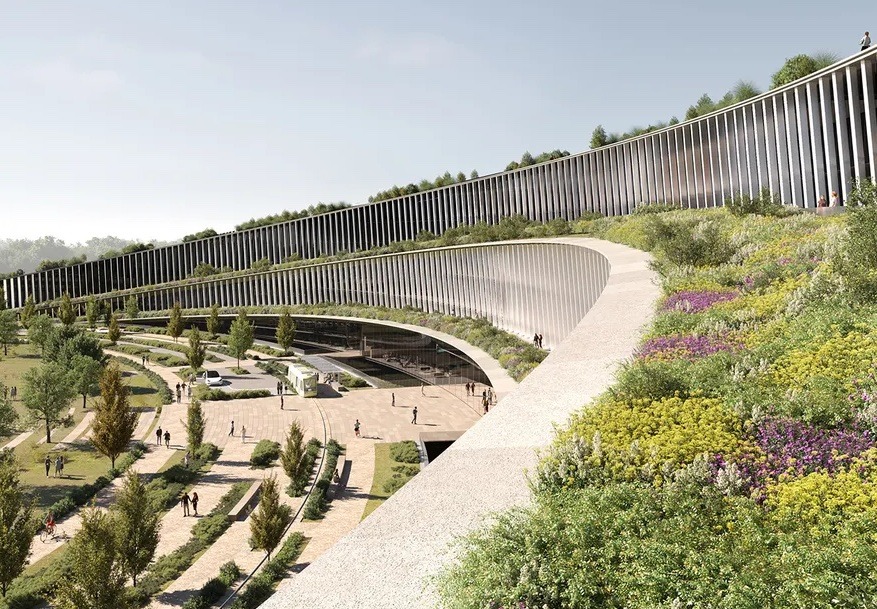
Those of you who regularly read my blog know that I write a lot about trends influencing healthcare and senior living design. But it’s not often that I hear about ideas or concepts that seem fresh or different.
However, in the past nine months, I learned about four new/emerging ideas that could affect how healthcare facilities and senior living communities are designed in the future:
1. Placemaking
When I heard development consultant Craig Witz talk about placemaking at the Environments for Aging conference last April, it felt like a concept for Senior Living 2.0.
Craig explained that placemaking isn’t about theming, ornamentation, landscaping, or the space between buildings. It’s also not a duck (a special building that is a symbol) or a decorated shed (conventional building that applies symbols).
He says that placemaking go beyond programming, functionality, and aesthetics to create a sense of place and meaning. According to Australian academic and scholar George Seddon, placemaking is “A characteristic that some geographic places have, and some (most) do not. It is a feeling or perception in relation to those characteristics that make a place special or unique, as well as those that foster a sense of authentic human attachment and belonging.”
Placemaking also consciously or unconsciously incorporates fundamental archetypal patterns and symbols to create an embodied experience of place — what makes a place meaningful and why. Craig shared seven placemaking patters, which I won’t go into here, but I’m sure they will be presented in a paper on the subject that he’s releasing in January.
2. Brain Capital
This novel concept, which was introduced at the United Nations Science Summit in September, puts a premium on cognitive skills and abilities in accomplishing socio-economic objectives. HKS’s Upali Nanda, Ph.D., who also serves as the Executive Director of the nonprofit research organization CADRE, moderated a session at the Summit to explore the impact of design elements — such as green spaces and accessible design — on cognitive, social, and emotional well-being.
It was through Upali and my volunteer role as a member of CADRE’s board of directors that I first learned about brain capital this past October.
In an article on the subject, Upali and her colleague Julie Hiromoto describe how built environments help build brain capital. For example, air quality impacts cognitive health, access to nature reduces stress and anxiety, novelty in environments can improve memory, and exposure to arts can activate dormant synapses in the brain.
According to Upali, the question we must ask ourselves in healthcare and senior living (as well as other sectors) is, “How do we create environments that get to the core of how someone learns, heals, relaxes, lives, and flourishes?”
By collaborating with the recently formed Brain Capital Alliance, CADRE and HKS hope to find out. Stay tuned for more to come.
3. 20-Minute Cities
Gensler wrote about 20-minute cities in its Design Forecast 2024 report, which was released in November. It’s the idea of vibrant, walkable neighborhoods, where all essentials are within a 20-minute reach — including restaurants, retail spaces, healthcare facilities, educational places, and residences.
And while this is a concept that has the potential to redefine city living, it’s also something that could be applied to more suburban areas as well. It’s a trend that Gensler says “underscores the importance of creating accessible, inclusive urban spaces that promote equity, connectivity, and community.”
When you think about this in the context of healthcare and senior living design, there are many opportunities.
4. Healthcare Park
Just this week, I came across a design by Mario Cucinella Architects for a new hospital and healthcare park in Cremona, Italy. Besides the striking semicircular layout for the hospital that has seven stories and stepped roof terraces, what caught my attention was the term “healthcare park,” which I hadn’t seen used before.
Another semicircular colonnade will face the hospital, enclosing a lake surrounded by a circular public park. Dezeen magazine reports that “As part of the wider masterplan, the healthcare park will feature a forest surrounding the hospital with green paths passing through the building that connect patients with therapeutic activities, including meditation spaces, forest bathing, a community food forest and outdoor reading spaces.”
Other elements of the healthcare park include a pedestrian route with spaces for public recreation, sport, and social interaction; and an extensive natural system of meadows with a lake at the center for hosting larger public events and activities.
How cool is that? And why shouldn’t every hospital that isn’t landlocked have a healthcare park?
What new ideas/concepts did you learn about this year? Please share them in the comment box below or email me.
P.S. Please do me a favor — if you liked this post and like this blog, please share it with others by sending them the link or posting it on your Twitter, LinkedIn, or Facebook. Also, don’t forget to subscribe, so you’ll get emails when new content is posted. Thanks!
Image: MCA Visual
If you like this post, please share.

What’s my story? I’m a healthcare and senior living design knowledge expert who writes and speaks frequently about trends and issues affecting these two industries. I’m also a strategic marketing consultant and content creator, working with companies and organizations who want to improve the quality of healthcare and senior living through the design of the physical environment. You can reach me at sara@saramarberry.com.

